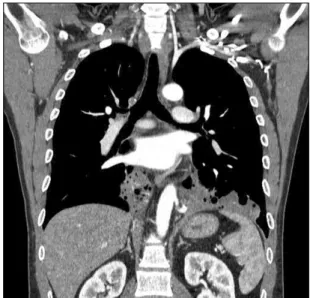ISSN: 2233-601X (Print) ISSN: 2093-6516 (Online)
− 475 −
Received: December 30, 2015, Revised: March 29, 2016, Accepted: April 8, 2016, Published online: December 5, 2016
Corresponding author: Sukki Cho, Department of Thoracic and Cardiovascular Surgery, Seoul National University Bundang Hospital, 82 Gumi-ro 173beon-gil, Bundang-gu, Seongnam 13620, Korea
(Tel) 82-31-787-7132 (Fax) 82-31-787-4050 (E-mail) skcho@snubh.org
© The Korean Society for Thoracic and Cardiovascular Surgery. 2016. All right reserved.
This is an open access article distributed under the terms of the Creative Commons Attribution Non-Commercial License (http://creativecommons.org/
licenses/by-nc/4.0) which permits unrestricted non-commercial use, distribution, and reproduction in any medium, provided the original work is properly cited.
Elevated Carbohydrate Antigen 19-9 Level in a Patient with Horseshoe Type Pulmonary Sequestration
Bub-Se Na, M.D. 1 , Sungjoon Park, M.D. 1,2 , Sukki Cho, M.D., Ph.D. 1,3
1
